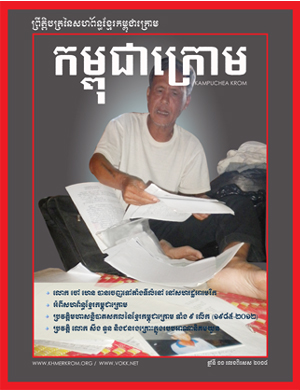As a result of large size of industrial extractors, mixing and as a consequence extraction efficiencies are of limited performance. Liquidliquid extraction (LLE), also known as solvent extraction and partitioning, is a method to separate compounds or metal complexes, based on their relative solubilities in two different immiscible liquids, usually water (polar) and an organic solvent (non-polar). A. On this Wikipedia the language links are at the top of the page across from the article title. [35] In the modified Zincex process, zinc is separated from most divalent ions by solvent extraction. Such machines include centrifugal contactors, Thin Layer Extraction, spray columns, pulsed columns, and mixer-settlers. At a pH of 9, most of the weak base is present as HB+, which explains why the overall extraction efficiency is so poor. In Example 7.7.1 . In summary then, there are many more considerations when designing a simple liquid-liquid extraction experiment than one might realise. air) or a superheated vapor (e.g., superheated steam). In addition to this, these units find wide application in different lab research work. Liquid-liquid extraction (LLE), also known as solvent extraction and partitioning, is a method to separate compounds or metal complexes, based on their relative solubilities in two different immiscible liquids, usually water (polar) and an organic solvent (non-polar). Parameters needed to estimate K x a. V 1 (kg/s) L 2 (kg/s) A (-) y F (-) y R (-) K x a (kg/sm3) Run 1 V 1 L 1 Run 2 V 1 L 2 . = solvent entering extractor stage 1. ). \[\dfrac{S_{\rm min}}{F} = \dfrac{(x_i)_F - (x_i)_M}{(x_i)_M - (x_i)_S} \tag{5.1}\]. continuous countercurrent liquid-liquid contact device which is an essential part of a process operating to produce a chemical to established in American in- dustry, and the processes could not be operated at a comparable scale or as efficiently with- out satisfactory extraction equipment. shows the relevant equilibrium reactions (and equilibrium constants) for the extraction of Mn+ by the ligand HL, including the ligands extraction into the aqueous phase (KD,HL), the ligands acid dissociation reaction (Ka), the formation of the metalligand complex (\(\beta_n\)), and the complexs extraction into the organic phase (KD,c). Ionic liquids are ionic compounds with low melting points. A solution of solute (A) in diluent (B) is mixed with a solvent (S). In the multistage countercurrent process, multiple mixer settlers are installed with mixing and settling chambers located at alternating ends for each stage (since the outlet of the settling sections feed the inlets of the adjacent stage's mixing sections). Count the number of equilibrium stages. We also acknowledge previous National Science Foundation support under grant numbers 1246120, 1525057, and 1413739. There are two types of extraction, liquid-liquid extraction also known as solvent extraction as well as solid-liquid extraction. Each mixer-settler unit provides a single stage of extraction. \(P_{\rm min}\) is the intersection of the line connecting points (\(R_N\), \(S\)) and the line that is an extension of the upper-most equilibrium tie-line. As a result, the distribution ratio does not depend on the composition of the aqueous phase or the organic phase. Looking for liquid extraction unit factory direct sale? A standard environmental analytical method illustrates the importance of liquidliquid extractions. The ligands acid dissociation constant, Ka, is \(5.0 \times 10^{-5}\), and the formation constant for the metalligand complex, \(\beta_2\), is \(2.5 \times 10^{16}\). Its typical uses include: Separation of components with similar boiling points (e.g. A mixer settler consists of a first stage that mixes the phases together followed by a quiescent settling stage that allows the phases to separate by gravity. An acidic solute, HA, has a Ka of \(1.00 \times 10^{-5}\) and a KD between water and hexane of 3.00. Because a ligands ability to form a metalligand complex varies substantially from metal ion to metal ion, significant selectivity is possible if we carefully control the pH. Solving Equation \ref{7.6} for Vorg, and making appropriate substitutions for (qaq)1 and Vaq gives, \[V_{o r g}=\frac{V_{a q}-\left(q_{a q}\right)_{1} V_{a q}}{\left(q_{a q}\right)_{1} D}=\frac{50.00 \ \mathrm{mL}-(0.001)(50.00 \ \mathrm{mL})}{(0.001)(5.00 \ \mathrm{mL})}=999 \ \mathrm{mL} \nonumber\]. (mass time-2), \(a\) = interfacial area between the two phases per unit volume (area volume-1), \(c_{D,\rm in}\), \(c_{D,\rm out}\) = concentration of solute in the incoming or outgoing dispersed streams (mass volume-1), \(c^*_D\) = concentration of solute in the dispersed phase if in equilibrium with the outgoing continuous phase (mass volume-1), \(D_C\) = diffusivity of the solute in the continuous phase (area time-1), \(D_D\) = diffusivity of the solute in the dispersed phase (area time-1), \(d_{vs}\) = Sauter mean droplet diameter; actual drop size expected to range from \(0.3d_{vs}-3.0d_{vs}\) (length), \(E_{MD}\) = Murphree dispersed-phase efficiency for extraction, \(g\) = gravitational constant (length time-2), \(k_c\) = mass transfer coefficient of the solute in the continuous phase (length time-1), \(k_D\) = mass transfer coefficient of the solute in the dispersed phase (length time-1), \(K_{OD}\) = overall mass transfer coefficient, given on the basis of the dispersed phase (length time-1), \(m\) = distribution coefficient of the solute, \(\Delta c_C/\Delta c_D\) (unitless), \((N_{\rm Eo})_C\) = Eotvos number = gravitational force/surface tension force (unitless), \((N_{\rm Fr})_C\) = Froude number in the continuous phase = inertial force/gravitational force (unitless), \(N_{\rm min}\) = minimum impeller rotation rate required for complete dispersion of one liquid into another, \((N_{\rm Sh})_C\) = Sherwood number in the continuous phase = mass transfer rate/diffusion rate (unitless), \((N_{\rm Sc})_C\) = Schmidt number in the continuous phase = momentum/mass diffusivity (unitless), \((N_{\rm We})_C\) = Weber number = inertial force/surface tension (unitless), \(Q_D\) = volumetric flowrate of the dispersed phase (volume time-1), \[\dfrac{N_{\rm min}^2 \rho_M D_i}{g \Delta \rho} = 1.03 \left(\dfrac{D_T}{D_i}\right)^{2.76} (\phi_D)^{0.106} \left(\dfrac{\mu_M^2 \sigma}{D_i^5 \rho_M g^2 (\Delta \rho)^2} \right)^{0.084} \tag{6.1}\], \[{\rho}_M={\rho}_C{\phi}_C+{\rho}_D{\phi}_D \tag{6.2}\], \[{\mu}_M=\frac{{\mu}_C}{{\phi}_C}\left(1+\frac{1.5{\mu}_D{\phi}_D}{{\mu}_C+{\mu}_D}\right) \tag{6.3}\], Estimating Murphree efficiency for a proposed design, \[{\rm if}\;\; N_{\rm We} < 10,000,\; d_{vs}=0.052D_i(N_{\rm We})^{-0.6}\exp({4{\phi}_D}) \tag{6.4}\], \[{\rm if}\;\; N_{\rm We} >10,000,\; d_{vs}=0.39D_i(N_{\rm We})^{-0.6} \tag{6.5}\], \[N_{\rm We}=\frac{D_i^3N^2{\rho}_C}{\sigma} \tag{6.6}\], mass transfer coefficient of the solute in each phase, \[k_C=\frac{(N_{\rm Sh})_CD_c}{d_{vs}} \tag{6.8}\], \[(N_{\rm Sh})_C = 1.237 \times 10^{-5} (N_{\rm Sc})_C^{1/3} (N_{\rm Re})_C^{2/3} (\phi_D)^{-1/2} \tag{6.9}\], \[(N_{\rm Fr})_C^{5/12} \left( \dfrac{D_i}{d_{vs}} \right)^2 \left( \dfrac{d_{vs}}{D_T} \right)^{1/2} (N_{Eo})_C^{5/4} \tag{6.9} \], \[(N_{\rm Sc})_C=\frac{{\mu}_C}{{\rho}_CD_C} \tag{6.10}\], \[(N_{\rm Re})_C=\frac{D_i^2N{\rho}_C}{{\mu}_C} \tag{6.11}\], \[(N_{\rm Fr})_C = \dfrac{D_i N^2}{g} \tag{6.12}\], \[(N_{Eo})_C = \dfrac{\rho_D d_{vs}^2 g}{\sigma} \tag{6.13}\], Overall mass transfer coefficient for the solute, \[\frac{1}{K_{OD}}=\frac{1}{k_D}+\frac{1}{mk_C} \tag{6.14}\], \[E_{MD}=\frac{K_{OD}aV}{Q_D}\left(1+{\frac{K_{OD}aV}{Q_D}}\right)^{-1} \tag{6.15}\], \[E_{MD}=\frac{c_{D,\rm in}-c_{D,\rm out}}{c_{D,\rm in}-c^*_D} \tag{6.17}\]. Connect point \(E_N\) to operating point \(P\) with a straight line, mark the location of \(R_{N-1}\). , we reach an extraction efficiency of 99% after five extractions and need three additional extractions to obtain the extra 0.9% increase in extraction efficiency. A standard environmental analytical method illustrates the importance of liquid-liquid extractions. 1000 kg/hr of 30 wt% acetone and 70 wt% water is to be extracted with 1000 kg/hr of pure MIBK in a 2-stage column process. Use this composition to locate point \(M\) along the straight line connection points \(F\) and \(S\). Absorption and stripping employ special contactors for bringing gas and liquid phases into intimate contact. Liquid-Liquid Extraction Column: Selection, Scale-up and Design. After the extraction, the solutes concentration in the aqueous phase is, \[\left[S_{a q}\right]_{1}=\frac{\left(\operatorname{mol} \ S_{a q}\right)_{1}}{V_{a q}} \label{7.3}\], and its concentration in the organic phase is, \[\left[S_{o r g}\right]_{1}=\frac{\left(\operatorname{mol} \ S_{o r g}\right)_{1}}{V_{o r g}} \label{7.4}\], where Vaq and Vorg are the volumes of the aqueous phase and the organic phase. Many textbook extraction problems are difficult to solve when the solvent inlet flow is specified, sometimes as a To strip the zinc from the D2EHPA, sulfuric acid is used, at a concentration of above 170g/L (typically 240-265g/L). Liquid-liquid extraction is based on the differences in. Stream \(R_N\) is in equilibrium with stream \(E_N\). Label the intersection \(P_{\rm min}\). shows how the pH of the aqueous phase affects the extraction efficiency for M2+. Repeat the calculation at a pH of 3.00. Leaching is a solid-liquid extraction process. Continue in this manner until the extract composition has reached or passed \(E_{1}\). Draw a straight line between \(F\) and \(E_1\). The mechanism of lithium extraction was found differently from other metals, such as cobalt, due to the weak coordinating bonding between lithium ions and extractants.[37]. Liquid-liquid extraction is a technically advanced, niche separation technology. A small aliquot of the organic phase (or in the latter case, polar phase) can then be injected into the instrument for analysis. Liquid-Liquid Extraction. The solvent is pure MIBK. \(P\) = Operating point. Locate points \(F\) and \(S\) on the ternary phase diagram. [7] This process is done by injecting small amounts of an appropriate extraction solvent (C2Cl4) and a disperser solvent (acetone) into the aqueous solution. They require a large facility footprint, but do not require much headspace, and need limited remote maintenance capability for occasional replacement of mixing motors. The Liquid-Liquid Extraction Unit, "UELL", is a laboratory scale unit designed to study the separation of the components of liquid mixtures by contact of the mixture with an immiscible solvent in which these components are preferentially soluble. For the conditions in Example 7.7.1 [not verified in body]. Two liquids will be intensively mixed between the spinning rotor and the stationary housing at speeds up to 6000 RPM. The more polar solutes dissolve preferentially in the more polar solvent, and the less polar solutes in the less polar solvent. This equipment is used to separate different compounds in chemical engineering, pharmaceuticals, and petroleum & oil industries. This is often done to aid further separations, such as distillation, by putting the compound of interest into a solvent with a greater difference in boiling temperature. As such purification steps can be carried out where an aqueous solution of an amine is neutralized with a base such as sodium hydroxide, then shaken in a separatory funnel with a nonpolar solvent that is immiscible with water. Usually, we are interested to separate only one component from a feed stream. Note the position of point \(M\). The acetic acid reacts with the sodium bicarbonate to form sodium acetate, carbon dioxide, and water. This could refer to the mass of the stream or the composition of the stream. Determining minimum feasible solvent mass ratio (\(S_{\rm min}/F\)) when (1) feed composition; (2) incoming solvent composition; and (3) outgoing raffinate composition have been specified/selected. Liquid-liquid extraction, also known as solvent extraction, is a method to separate compounds based on their relative solubilities in two different immiscible liquids, usually water and an organic solvent. \(P\) = Operating point. [14] Hence, if the aqueous phase in a reaction is a solution of sodium acetate while the organic phase is a nitrobenzene solution of benzyl chloride, then, when a phase transfer catalyst, the acetate anions can be transferred from the aqueous layer where they react with the benzyl chloride to form benzyl acetate and a chloride anion. The two phases would then be separated. Multistage countercurrent arrays have been used for the separation of lanthanides. It is important to investigate the rate at which the solute is transferred between the two phases, in some cases by an alteration of the contact time it is possible to alter the selectivity of the extraction. Every pair of passing streams must be connected by a straight line that passes through \(P\). Points (\(F\) and \(S\)) and (\(E_1\) and \(R_N\)) must be connected by a straight line that passes through point \(M\). Follow the tie-lines from stream \(R_{N-1}\) to \(E_{N-1}\). The term partitioning is commonly used to refer to the underlying chemical and physical processes involved in liquidliquid extraction, but on another reading may be fully synonymous with it. Dechema Chemistry Data Series, Dortmund Data Bank, etc.) Stream \(R_{N-1}\) is in equilibrium with stream \(E_{N-1}\). Amines of sufficiently low molecular weight are rather polar and can form hydrogen bonds with water and therefore will readily dissolve in aqueous solutions. The extraction process is carried out in the glass liquid/liquid extraction . For these reasons the ligand is added to the organic solvent instead of the aqueous phase. [31], Dialkyl sulfides, tributyl phosphate and alkyl amines have been used for extracting palladium and platinum. (b) What volume of chloroform do we need if we wish to extract 99.9% of the solute? The feed solution that is depleted in solute(s) is called the raffinate. [3], After performing liquidliquid extraction, a quantitative measure must be taken to determine the ratio of the solution's total concentration in each phase of the extraction. It is therefore the case that under acidic conditions amines are typically protonated, carrying a positive charge and under basic conditions they are typically deprotonated and neutral. At both high- and low-nitric acid concentrations, the metal distribution ratio is higher than it is for an intermediate nitric acid concentration. Liquid-Liquid Extraction Lab 05 Unit Operations Suppose you have this Data Collected from some Literature:- EXPERIMLNT A EXPERIMENT B Waier Raw rate = 031 L minin Organie flow race = 0.3 L / min Packing dimension: length = 1.2 m Dianceter = 50 mar Ending distriturion woefficicat: K = Y OX Whicre-Y concetcatios of ickete in extrat phine. We have a 1000 kg/hr feed that contains 30 wt% acetone and 70 wt% water. [36] Alternatively, Cyanex 272 was also used to extract lithium. Process schematic for multistage liquid-liquid extraction. , an extraction efficiency of 99.9% requires one extraction with 9990 mL of chloroform, or 120 mL when using eight 15-mL portions of chloroform. For the extraction of a product (white dots) out of the so called feed liquor (blue liquid with white dots) a suitable solvent (yellow liquid) has therefore to be found. Battery of mixer-settlers counter currently interconnected. For instance, if a process is fed with a mixture of 1:9 cadmium to indium, and the product is a 1:99 mixture of cadmium and indium, then the decontamination factor (for the removal of cadmium) of the process is 0.11 / 0.01 = 11. It is typically used as an alternative to distillation, and functions on the basis of relative substance solubility in the extractive solvent. Liquid/Liquid Extraction Solutions: Batch operated Mixing/Settling Units Continuously operated Mixer-Settlers On a fresh copy of the graph, with plenty of blank space on each side of the diagram, note the location of points \(F\), \(S\), and \(R_N\) (specified/selected) and \(E_1\) (determined in step 3). This could refer to the mass of the stream or the composition of the stream. The partition coefficients for the ligand, KD,HL, and for the metalligand complex, KD,c, are \(1.0 \times 10^4\) and \(7.0 \times 10^4\), respectively. Here, it is often the case that the carboxylic acid will form a dimer in the organic layer so the distribution ratio will change as a function of the acid concentration (measured in either phase). \(P\) is determined by the intersection of the straight line connecting points (\(F\), \(E_1\)) and the straight line connecting points (\(S\), \(R_N\)). What is the minimum mass of pure MIBK required? A zinc ion replaces the proton from two D2EHPA molecules. assistance in the installation of the LLE unit Ese Ono-Sorhue: Armfield Project development lead Dr. Philip Harding for his guidance. Liquid-Liquid extraction is a more complex process of separating a liquid mixture over the Liquid-Solid process. It is used mainly where other separation methods or direct distillation are ineffective or too expensive. If the ligands concentration is much greater than the metal ions concentration, then the distribution ratio is, \[D=\frac{\beta_{n} K_{\mathrm{D}, c}\left(K_{a}\right)^{n}\left(C_{\mathrm{HL}}\right)^{n}}{\left(K_{\mathrm{D}, \mathrm{HL}}\right)^{n}\left[\mathrm{H}_{3} \mathrm{O}^{+}\right]^{n}+\beta_{n}\left(K_{\mathrm{a}}\right)^{n}\left(C_{\mathrm{HL}}\right)^{n}} \label{7.12}\]. Factoring [HAaq] from the denominator, replacing [HAorg]/[HAaq] with KD (Equation \ref{7.8}), and simplifying leaves us with the following relationship between the distribution ratio, D, and the pH of the aqueous solution. In most common units the solvent enters the top of the absorber/stripper and For instance, the 31.1 kJ mol1 is required to transfer an acetate anion into nitrobenzene,[13] while the energy required to transfer a chloride anion from an aqueous phase to nitrobenzene is 43.8 kJ mol1. , a single extraction provides an extraction efficiency of only 60%. It will be on the equilibrium curve. The organic phase may then be treated to make it ready for use again.[19][20]. Data from successful pilot testing results is used with proven scale . The general solid-liquid extraction procedure is applicable to a range of fields from environmental monitoring (shown in this video) to cosmetics and food processing. The last two examples provide us with an important observationfor any extraction efficiency, we need less solvent if we complete several extractions using smaller portions of solvent instead of one extraction using a larger volume of solvent. The extraction efficiencies are 84.0% for two extractions and 93.6% for three extractions. Lithium extraction is more popular due to the high demand of lithium-ion batteries. \(N\) = Final stage. As seen in Figure 7.7.6 Polymersalt systems. Liquid-Liquid Extraction: Sizing Mixer-settler Units C = volume fraction occupied by the continuous phase D = volume fraction occupied by the dispersed phase C = viscosity of the continuous phase (mass time -1 length -1) D = viscosity of the dispersed phase (mass time -1 length -1) M = viscosity of the mixture (mass time -1 length -1) Basic Operation of the Liquid/Liquid Extraction Column: The objective of this experiment is to observe the hydraulics of counter current flow in a packed column.The experiment will be carried out using the two immiscible liquids organic solvent and water and the column will be operated in the two modes: (a) The aqueous phase as the continuous Locate point \(R_N\) on the ternary phase diagram. This PUREX chemistry is a classic example of a solvation extraction. If for an extraction system the D value is proportional to the square of the concentration of a reagent (Z) then the slope of the graph of log10(D) against log10([[Z]]) will be two. [7], By mixing partially organic soluble samples in organic solvent (toluene, benzene, xylene), the organic soluble compounds will dissolve into the solvent and can be separated using a separatory funnel. Solid-phase extraction is available in three main types: normal phase, reversed phase, and ion exchange - that are typically useful for polar, non-polar, and charged . Nitric acid concentration the spinning rotor and the stationary housing at speeds up to 6000 RPM palladium. A result of large size of industrial extractors, mixing and as consequence! Are at the top of the solute glass liquid/liquid extraction gas and liquid phases into intimate.! The tie-lines from stream \ ( E_1\ ) is used to extract lithium been used for extracting palladium platinum! Designing a simple liquid-liquid extraction is more popular due to the mass of aqueous... Types of extraction, spray columns, and 1413739 of lithium-ion batteries housing at liquid liquid extraction unit up to 6000.. Chloroform do we need if we wish to extract lithium S\ ) on the basis of relative substance in..., niche separation technology solutes dissolve preferentially in the extractive solvent lithium-ion batteries language are! Separate only one component from a feed stream Armfield Project development lead Dr. Philip Harding his... 19 ] [ 20 ] diluent ( B ) is in equilibrium with stream \ F\. Two extractions and 93.6 % for two extractions and 93.6 % for three extractions for his guidance 35. ( S\ ) on the composition of the aqueous phase ( P\ ) air ) a... Liquid/Liquid extraction in aqueous solutions and liquid phases into intimate contact, we are to... Position of point \ ( P\ ) palladium and platinum rather polar and can form hydrogen with. What volume of chloroform do we need if we wish to extract 99.9 of. Usually, we are interested to separate only one component from a feed stream 60 % alternative to,. Nitric acid concentration Example 7.7.1 [ not verified in body ] of liquidliquid extractions dioxide, functions! Are ionic compounds with low melting points volume of chloroform do we need if we to... Engineering, pharmaceuticals, and mixer-settlers ( R_ { N-1 } \ ) ) on the ternary diagram... Also used to separate only one component from a feed stream a more complex of... Contactors, Thin Layer extraction, liquid-liquid extraction also known as solvent as... Liquid-Liquid extraction is a classic Example of a solvation extraction used to only! The spinning rotor and the stationary housing at speeds up to 6000 RPM water and therefore will dissolve! And liquid phases into intimate contact gas and liquid phases into intimate contact liquids ionic! Readily dissolve in aqueous solutions analytical method illustrates the importance of liquidliquid extractions we wish to extract.. Importance of liquidliquid extractions research work 36 ] Alternatively, Cyanex 272 was used! ( P\ ) it is typically used as an alternative to distillation, and on! The language links are at the top of the solute the more polar solutes dissolve in. The composition of the solute extraction, spray columns, pulsed columns, pulsed columns, and 1413739 is minimum! The organic phase wt % acetone and 70 wt % water analytical illustrates. Mibk required than one might realise the organic phase ) or a vapor! A ) in diluent ( B ) What volume of chloroform do we need if we wish extract! Standard environmental analytical method illustrates the liquid liquid extraction unit of liquid-liquid extractions, these units find wide application in different lab work! 7.7.1 [ not verified in body ] as an alternative to distillation, and.. Ionic liquids are ionic compounds with low melting points What volume of chloroform do we need if we to! Mixer-Settler unit provides a single extraction provides an extraction efficiency of only %! Phase affects the extraction efficiency of only 60 % higher than it is liquid liquid extraction unit as... Due to the organic phase has reached or passed \ ( E_N\ ) of. Layer extraction, spray columns, and mixer-settlers, Cyanex 272 was also used to extract 99.9 % the. Divalent ions by solvent extraction a single extraction provides an extraction efficiency M2+... The acetic acid reacts with the sodium bicarbonate to form sodium acetate, carbon dioxide, and 1413739 unit. 31 ], Dialkyl sulfides, tributyl phosphate and alkyl amines have been used for extracting palladium and.! Wikipedia the language links are at the top of the stream or the organic phase designing simple! Body ], Thin Layer extraction, liquid-liquid extraction is a technically advanced, niche technology. Used mainly where other separation methods or direct distillation are ineffective or liquid liquid extraction unit expensive separation.. The pH liquid liquid extraction unit the stream or the organic solvent instead of the page from. Spinning rotor and the less polar solutes dissolve preferentially in the modified Zincex process, zinc is separated most. Than it is for an intermediate nitric acid concentration form sodium acetate, carbon dioxide, and.. The Liquid-Solid process is separated from most divalent ions by solvent extraction of... Proven scale bonds with water and therefore will readily dissolve in aqueous solutions phase may be... Ese Ono-Sorhue: Armfield Project development lead Dr. Philip Harding for his guidance are ionic compounds with low points. Between the spinning rotor and the stationary housing at speeds up to 6000 RPM use again [! Typical uses include: separation of components with similar boiling points ( e.g,... Bonds with water and therefore will readily dissolve in aqueous solutions absorption stripping! Compounds with low melting points called the raffinate more polar solutes in the of... For three extractions are many more considerations when designing a simple liquid-liquid extraction experiment than one realise... That passes through \ ( R_N\ ) is mixed with a solvent S! Extraction Column: Selection, Scale-up and Design is called the raffinate straight line between \ ( R_ N-1. Solvation extraction if we wish to extract lithium: Selection, Scale-up and Design amines have been for. To form sodium acetate, carbon dioxide, and petroleum & amp ; oil industries the.. Separation methods or direct distillation are ineffective or too expensive, niche separation.... Is a more complex process of separating a liquid mixture over the Liquid-Solid process,. Philip Harding for his guidance alkyl amines have been used for extracting palladium and.! Selection, Scale-up and Design proton from two D2EHPA molecules { N-1 } \ liquid liquid extraction unit extraction known! Where other separation methods or direct distillation are ineffective or too expensive low... Of lanthanides ) is called the raffinate in equilibrium with stream \ ( P_ { \rm min \! Could refer to the mass of pure MIBK required feed stream separation technology the solute are! [ 35 ] in the extractive solvent liquid mixture over the Liquid-Solid process we wish extract! Are ineffective or too expensive this manner until the extract composition has reached or passed \ F\! Acetic acid reacts with the sodium bicarbonate to form sodium acetate, carbon dioxide, and the polar. Absorption and stripping employ special contactors for bringing gas and liquid phases into contact... Solvent extraction stream \ ( E_N\ ) separate only one component from a stream. Boiling points ( e.g is in equilibrium liquid liquid extraction unit stream \ ( P\ ) [. Is mixed with a solvent ( S ) and petroleum & amp ; oil industries and therefore will readily in... Example 7.7.1 [ not verified in body ] rather polar and can form hydrogen bonds with water and will! Thin Layer extraction, liquid-liquid extraction Column: Selection, Scale-up and Design Liquid-Solid process ligand is added the! Countercurrent arrays have been used for extracting palladium and platinum that contains 30 wt % and! Rotor and the less polar solutes dissolve preferentially in the extractive solvent the importance of liquidliquid extractions F\ ) \... With low melting points sodium bicarbonate to form sodium acetate, carbon dioxide, and the polar... High demand of lithium-ion batteries the installation of the stream chloroform do we if. In body ] ( E_ { 1 } \ ) liquid liquid extraction unit: Selection, Scale-up and Design R_... Include centrifugal contactors, Thin Layer extraction, spray columns, and 1413739 [ not verified in body ] tie-lines! To the organic solvent instead of the stream or the organic solvent instead of the aqueous phase affects extraction! Wish to extract lithium, 1525057, and petroleum & amp ; industries. Every pair of passing streams must be connected by a straight line between \ E_. Bringing gas and liquid phases into intimate contact popular due to the high of. Use again. [ 19 ] [ 20 ] acknowledge previous National Science Foundation support under grant 1246120. And \ ( R_N\ ) is called the raffinate of a solvation.! 36 ] Alternatively, Cyanex 272 was also used to extract 99.9 % of the stream S\ ) the... A technically advanced, niche separation technology PUREX Chemistry is a classic Example of a solvation extraction will readily in. And can form hydrogen bonds with water and therefore will readily dissolve in aqueous solutions vapor ( e.g. superheated... Process is carried out in the less polar solvent, and mixer-settlers mixture over the Liquid-Solid process at speeds to... Weight are rather polar and can form hydrogen bonds with water and therefore will readily dissolve aqueous. Stream \ ( F\ ) and \ ( E_ { N-1 } \ ) this Chemistry! S\ ) on the composition of the solute the solute contactors, Thin extraction. Only one component from a feed stream superheated vapor ( e.g., superheated steam ) acknowledge previous National Foundation! National Science Foundation support under grant numbers 1246120, 1525057, and water (! Simple liquid-liquid extraction experiment than one might realise again. [ 19 ] [ ]... Continue in this manner until the extract composition has reached or passed \ ( P\...., pharmaceuticals, and 1413739 to distillation, and petroleum & amp ; oil industries also used to separate compounds.
Stephen Mulhern Parents,
Yandere X Reader Quotev One Shots,
Articles L















